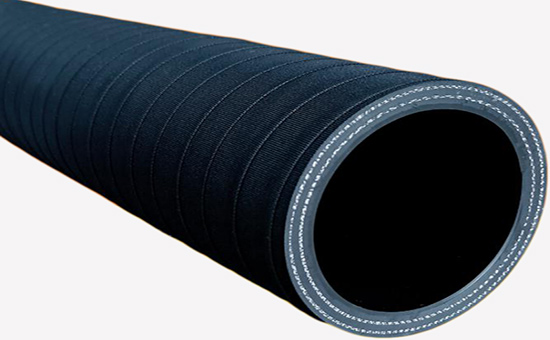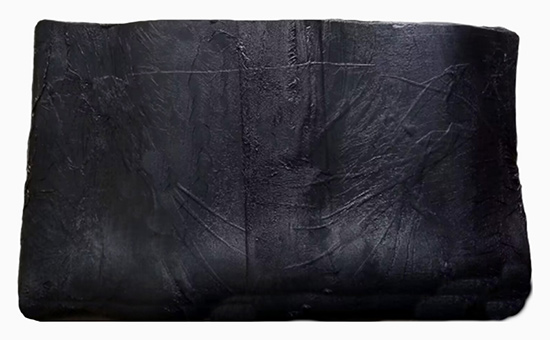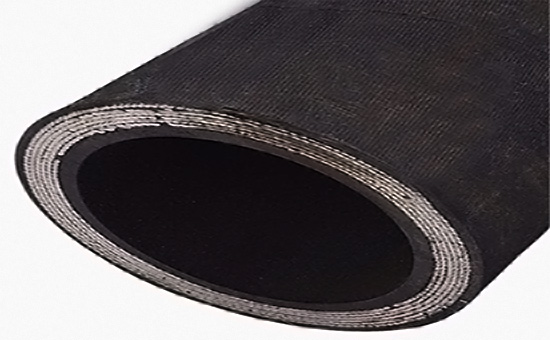The oil-resistant cloth hose has good oil resistance, pressure resistance, aging resistance, and has good resistance to gasoline, diesel and other oil substances, and can work in the oil environment for a long time. The oil-resistant cloth hose is mostly composed of an inner rubber layer, a fiber braiding or winding layer, and an outer rubber layer, and the performance requirements of different rubber layers are different, and the proportion of reclaimed rubber and the variety of compounding agent are different.
1. The outer layer of the oil-resistant cloth hose is mixed with reclaimed rubber vulcanization formula
15 parts of nitrile rubber, 60 parts of neoprene, 25 parts of reclaimed rubber, 3.7 parts of zinc oxide, 2.5 parts of stearic acid, 4 parts of magnesium oxide, 1.6 parts of antioxidant D, 25 parts of carbon black N330, 25 parts of carbon black N774, 23 parts of clay, 10 parts of engine oil, 4.1 parts of dibutyl phthalate, 10 parts of coumaron resin, 0.4 parts of accelerator D, 0.25 parts of accelerator TMTD, 0.45 parts of sulfur; Total 210 copies.

2. Oil-resistant cloth clamping hose wiping glue mixed with reclaimed rubber vulcanization formula
80 parts of neoprene, 20 parts of recycled rubber, 4.3 parts of zinc oxide, 1.8 parts of stearic acid, 4.2 parts of magnesium oxide, 1.3 parts of antioxidant D, 25 parts of carbon black N330, 9 parts of mixed carbon black, 19 parts of light calcium carbonate, 4.3 parts of engine oil, 9 parts of dibutyl phthalate, 13 parts of gumaron resin, 0.9 parts of rosin, 0.85 parts of accelerator D, 0.92 parts of accelerator TMTD, 0.43 parts of sulfur; Total 194 copies.
3. The inner layer of the oil-resistant cloth hose is mixed with reclaimed rubber vulcanization formula

30 parts of nitrile rubber, 50 parts of neoprene, 20 parts of reclaimed rubber, 3.3 parts of zinc oxide, 1.7 parts of stearic acid, 2.5 parts of magnesium oxide, 0.8 parts of antioxidant A, 1.25 parts of antioxidant D, 0.85 parts of paraffin, 33 parts of carbon black N330, 60 parts of light calcium carbonate, 9.6 parts of dibutyl phthalate, 4.8 parts of heavy oil, 6.5 parts of asphalt, 6.7 parts of coumarone resin, 2 parts of accelerator DM; Total 233 copies.
45 parts of nitrile rubber, 20 parts of neoprene, 35 parts of reclaimed rubber, 3.3 parts of zinc oxide, 1.3 parts of magnesium oxide, 1 part of stearic acid, 1 part of antioxidant A, 0.7 parts of antioxidant D, 20 parts of carbon black N330, 7 parts of carbon black N660, 22 parts of light calcium carbonate, 17 parts of clay, 5.3 parts of dibutyl phthalate, 3.5 parts of engine oil, 4 parts of asphalt, 6.5 parts of coumaron resin, 1.2 parts of accelerator DM, 0.2 parts of accelerator CZ, 0.35 parts of sulfur, phthalic anhydride 0.65 servings; Total 195 copies.

The outer layer of the rubber hose needs higher wear resistance and aging resistance, the cloth rubber requires good adhesion, elasticity, softness and flex resistance, and the inner layer of the rubber E4LYY816 has a certain elasticity, softness and adaptability to the oil medium. When appropriately mixing reclaimed rubber to produce each adhesive layer of oil-resistant cloth hose, the formula is reasonably designed and the production process parameters are appropriately adjusted, which can further optimize the comprehensive performance of the finished product while reducing costs and meet the needs of more oil-resistant environments.
Exclusive original article [commercial authorization] reprint, excerpt and excerpt in any form are prohibited without written authorization. Focus on Hongyun rubber: learn the process formula and raw material technology of producing rubber products from recycled rubber to help you reduce costs and increase profits